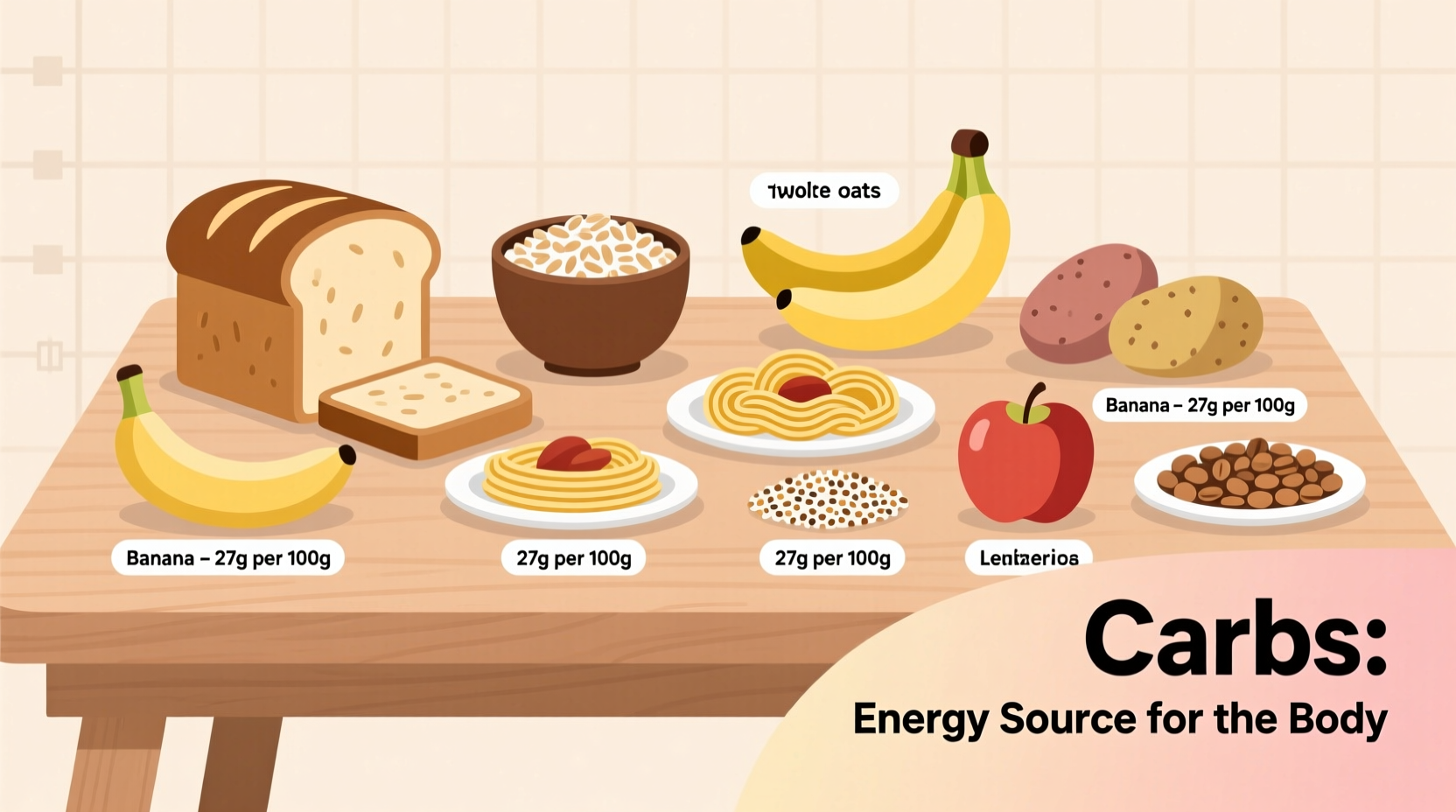Understanding which foods contain carbohydrates is essential for balanced nutrition planning. Whether you're managing blood sugar, fueling athletic performance, or simply making informed dietary choices, knowing your carb sources helps you make smarter food decisions. This comprehensive guide breaks down exactly which foods contain carbohydrates, categorizes them by nutritional value, and provides practical guidance for incorporating them wisely into your daily eating pattern.
Your Complete Guide to Carbohydrate Food Sources
Carbohydrates serve as your body's primary energy source, breaking down into glucose that fuels your brain, muscles, and organs. Not all carb-containing foods deliver equal nutritional value. The quality of carbohydrates you consume significantly impacts your energy levels, digestive health, and long-term wellness. Let's explore the major food categories that contain carbohydrates and how to choose the most beneficial options.
Understanding Carbohydrate Types in Foods
Carbohydrates naturally occur in three main forms across food groups: sugars, starches, and fiber. While all contribute to total carbohydrate content, their effects on your body differ substantially.
Natural sugars appear in fruits (fructose) and dairy products (lactose). Starches serve as complex carbohydrates in grains, legumes, and starchy vegetables. Dietary fiber, found in plant-based foods, provides essential digestive benefits without significantly impacting blood sugar. Processed foods often contain added sugars and refined starches that lack the nutritional profile of whole food sources.
Top Food Categories Containing Carbohydrates
Whole Grains and Cereals
Whole grains represent some of the most nutrient-dense carbohydrate sources available. Unlike refined grains, whole grains retain all three parts of the grain kernel - bran, germ, and endosperm - preserving valuable fiber, vitamins, and minerals.
Excellent whole grain options include oats, quinoa, brown rice, barley, and whole wheat products. These provide sustained energy release due to their complex carbohydrate structure and fiber content. The USDA Dietary Guidelines recommend making at least half your grain intake whole grains for optimal health benefits.
Fruits: Nature's Sweet Carbohydrate Sources
All fruits contain carbohydrates primarily in the form of natural sugars like fructose, along with valuable fiber, vitamins, and antioxidants. Berries, apples, pears, and citrus fruits offer particularly favorable carbohydrate-to-fiber ratios.
While bananas, mangoes, and grapes contain higher sugar content, they still provide essential nutrients when consumed as part of a balanced diet. The American Heart Association notes that whole fruits make significantly healthier carbohydrate choices compared to fruit juices or processed foods with added sugars.
Vegetables: Diverse Carbohydrate Profiles
Vegetables contain varying carbohydrate levels. Non-starchy vegetables like leafy greens, broccoli, peppers, and tomatoes provide minimal carbohydrates with maximum nutrients. Starchy vegetables including potatoes, sweet potatoes, corn, and peas deliver more substantial carbohydrate content along with important vitamins and fiber.
| Vegetable Type | Carbohydrate Content (per 100g) | Notable Nutrients |
|---|---|---|
| Broccoli | 7g | Vitamin C, K, folate, fiber |
| Spinach | 3.6g | Vitamin A, K, iron, magnesium |
| Sweet Potato | 20g | Vitamin A, C, potassium, fiber |
| Carrots | 9.6g | Vitamin A, K, potassium, antioxidants |
Data source: USDA FoodData Central

Legumes: Protein-Packed Carbohydrates
Beans, lentils, chickpeas, and peas deliver an exceptional combination of carbohydrates, protein, and fiber. These plant-based powerhouses provide sustained energy while supporting digestive health and blood sugar management.
According to research published in the American Heart Association Journal, regular legume consumption associates with improved cardiovascular health markers and better weight management outcomes.
Dairy Products: Natural Carbohydrate Sources
Milk and yogurt contain lactose, a natural sugar that provides carbohydrates along with high-quality protein and calcium. Plain, unsweetened varieties offer the most nutritional benefit without added sugars.
While cheese contains minimal carbohydrates, fermented dairy options like kefir provide additional probiotic benefits. The National Institutes of Health recognizes dairy as an important source of multiple essential nutrients beyond just carbohydrates.
Choosing Healthier Carbohydrate Sources
Not all carbohydrate-containing foods deliver equal health benefits. When selecting carb sources, prioritize options with these characteristics:
- High fiber content (at least 3g per serving)
- Minimal added sugars (less than 5g per serving)
- Whole food ingredients without extensive processing
- Nutrient density providing vitamins and minerals
Processed foods with refined grains and added sugars often cause rapid blood sugar spikes followed by energy crashes. These include white bread, pastries, candy, and sugary beverages. While occasional consumption fits within balanced eating patterns, making whole, unprocessed carbohydrate sources your primary choices supports better long-term health outcomes.
Practical Tips for Incorporating Carbohydrates
Understanding which foods contain carbohydrates is just the first step. Implementing this knowledge effectively requires practical strategies:
- Pair carbohydrates with protein and healthy fats to slow digestion and maintain steady energy levels
- Choose whole fruit over fruit juice to benefit from fiber content
- Replace refined grains with whole grain alternatives gradually to allow taste preferences to adjust
- Read nutrition labels to identify hidden added sugars in processed foods
- Include a variety of colorful vegetables to maximize nutrient diversity
Registered dietitians commonly recommend the plate method for balanced meals: fill half your plate with non-starchy vegetables, one-quarter with lean protein, and one-quarter with whole grain or starchy vegetable carbohydrate sources.
Carbohydrate Considerations for Special Dietary Needs
Different health conditions require specific carbohydrate management approaches. Individuals with diabetes benefit from consistent carbohydrate intake throughout the day and careful monitoring of blood sugar responses. Athletes often require higher carbohydrate intake to support training and recovery.
Those following low-carb eating patterns still consume carbohydrates from non-starchy vegetables, nuts, and seeds, while significantly reducing grains and sugars. The key is personalizing carbohydrate intake based on individual health status, activity level, and nutritional goals.











 浙公网安备
33010002000092号
浙公网安备
33010002000092号 浙B2-20120091-4
浙B2-20120091-4